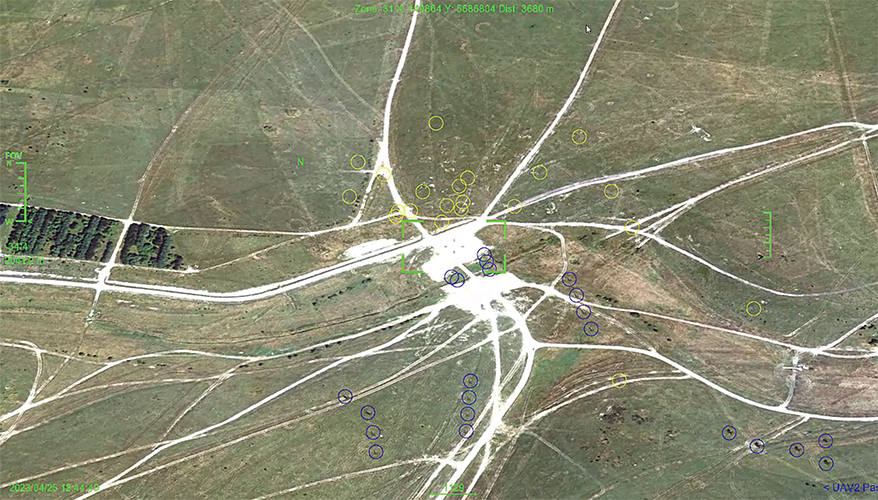TRAINING AND SIMULATION
Israeli Vendor Shows Off Live, Virtual, Constructive Simulator
6/5/2023
By Sean Carberry
By Sean Carberry

Rafael Advanced Defense System image
ROTTERDAM, Netherlands — Israel’s Rafael Advanced Defense Systems has long supported the Israel Defense Forces with training technology, and the company is now pursuing international customers for its Armed Forces Battle Simulation live, virtual and constructive system.The ABS-LVC system is designed to accommodate live, virtual and constructive multi-domain training from the individual soldier to corps level, Bar Oriol, marketing and business development manager in Rafael’s Multi Domain Warfare Directorate, said at the IT2EC conference.
Two large monitors showed U.K. forces conducting a mission to liberate a village captured by an enemy. The simulator includes multiple elements, he explained, as one screen showed a virtual drone feed of the village and the other a map of the entire battlefield with blue and red force locations. “It’s basically a lot of software services that at the end complete the entire package,” he said.
The core is the simulation, “and everything is connected to that and drives into that to enhance the scenario,” he said.
“We also have a planning and management tool that you create the training objectives on. It feeds into the simulation. We have data analytics tools” that provide real-time feedback and can also be used for after action, he said.
A critical component of the system is the doctrine engine, which “is a tool that we created that is a software service that is dual engine,” meaning it works on both the virtual and constructive levels, he said. “It automates pretty much anything you will want to do, any procedure.
“So, it can be a procedure from the level of a couple of squads attacking some building or just assembling on a rooftop position and up to the point of brigade or battalion attacks,” he continued. “It lowers the load controller significantly.”
That means fewer people are needed to run the simulation and move the pieces around the battlefield by hand, he explained.
The displays showed blue forces advancing on the village according to doctrine programmed before the exercise. “We gave the system predefined doctrine commands to advance, and [the load controllers] are not controlling right now in telling the units to move,” Oriol said. “The units are moving according to the way the doctrine engine planned out their movement.”
Oriol described the doctrine engine as “semi-AI” as it automates behaviors of actors in the simulator based on user input. To demonstrate, one of the load controllers opened a page on the screen — it looked like an online content management system.
“We need to pick, as you can see, from a list of doctrines, and all the doctrines can be edited and done even in real time,” Oriol said.
It doesn’t require any coding knowledge, he added. “We need actually the officers — the people who know how they want to fight — to enter the way they fight into this, and then it will do it for them later on.”
While Rafael designed ABS-LVC, the company did not develop the virtual engine. “We don’t need to. There are companies like MAK, Bohemia and Unity and Unreal, and all of them do this and they always update,” Oriol said.
“So, we are agnostic to the type of virtual engine, and we just bring our software and [application programming interface] onto it,” he added.
The system is cloud compatible and it is also modular in that customers can buy individual components like the doctrine engine, he said.
“We’re right now very interested in the U.K. space,” Oriol said, adding that the company is not competing for the British army’s Collective Training and Transformation Program, which seeks to expand live, virtual and constructive simulation capabilities. “We’re going to subcontract probably, because it’s a very, very large program,” he added.
“And we have some work that we started out in the United States, mostly business to business, looking into some of the U.S. big companies and what type of technologies we can offer,” he said. “It’s more offering parts rather than the entire package.”
Topics: International, Training and Simulation
